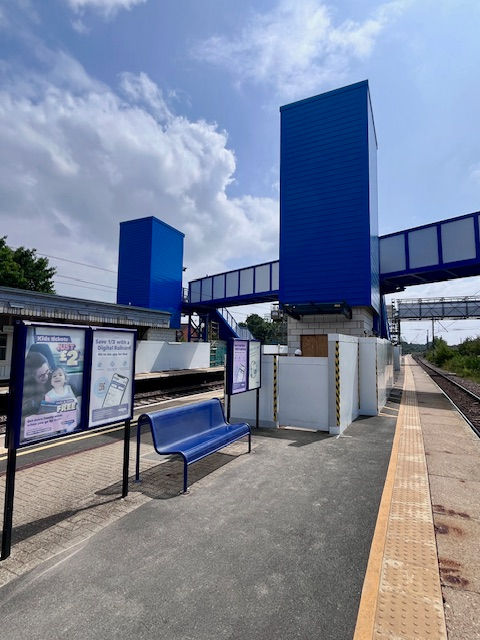Disabled people let down by ‘tick box’ attitude to Accessibility
- Julian Vaughan

- Jul 28, 2019
- 3 min read
Listening to Nusrat Ghani during the Westminster Hall debate earlier this week discussing the lack of step-free access at Flitwick station, I was struck by how the ‘tick box’ mentality still remains when dealing with accessibility issues. Ms Ghani MP, who is Under Secretary of State for Transport, pointed out that six out of the eight stations in the Mid Bedfordshire constituency were step-free.

Stations in Mid Bedfordshire Constituency – figures from the ORR
While technically she is indeed correct, this is looking at the situation that faces disabled and elderly people in Mid Bedfordshire with rose tinted glasses which seems to prevent a true picture of reality.
What wasn’t mentioned was that the two stations, Flitwick and Harlington, with the highest passenger figures, don’t have step-free access, dwarfing the combined footfall of all six step-free stations combined.
The Government proudly announces on a regular basis that 75% of passenger journeys on the railway take place from stations that are step-free. Shockingly in Mid Bedfordshire this figure is only 7%.

Harlington Station Platform 4 – the only accessible platform, but virtually no trains!
Further, when you start looking at those stations in Mid Bedfordshire that do have step-free access a less favourable picture appears:
Aspley Guise – unstaffed, no accessible toilet, no car park, no set down area
Kempston Hardwick – unstaffed, no accessible toilet, no car park, no set down area
Lidlington – unstaffed, no accessible toilet, no car park, no set down area
Millbrook – unstaffed, no accessible toilet, no car park, no set down area
Ridgmont – unstaffed, no accessible toilet
Stewartby – unstaffed, no accessible toilet, no car park, no set down area.
The lack of staff, accessible toilets, car parks and set down/pick up areas for mobility impaired people creates a significant barrier for disabled people to use these stations and travel independently.
Harlington station in Bedfordshire is described in the National Rail Enquiries as having step-free access to the ticket hall and Platform 4 (it’s a moot point as very few trains stop at this accessible platform, but there you go) and it has a disabled parking bay very close to the station entrance – box ticked.
However, the seeming inability of train companies to see their stations from a disabled person’s perspective is demonstrated when the lack of a dropped kerb from the disabled parking bay rules out many wheelchair users from accessing the station.

Harlington Station
Arlesey station ticks the ‘step free access coverage’ box, but again this only tells part of the story. Each of the two platforms are indeed step free, enabling disabled and elderly people and those with young children to board a train without too much difficulty.
However, the return trip presents difficulties as, on arrival back at Arlesey you will always be returning to the opposite platform. This means you will be on the opposite side to your car if you have one – and if you cannot negotiate the 60 odd steps, be then faced with an extremely long trip (0.88 miles and a 17 minute walk along an unlit main road) to get back to the correct side.
Information like this would be very useful, even if just to save you from an exhausting trip, but the National Rail Enquiries website offers no such advice or hint of what awaits the unwary traveller. The Train Operating Companies, who have responsibility for the website through the Rail Delivery Group seem content to offer customers a startlingly out of scale map, shown below.

Arlesey station as per National Rail Enquiries website
Sandy station, a few miles North of Arlesey, has similar issues with a lengthy journey to get from one side to the other and no mention at all of the adverse camber and steep slope faced by wheelchair users as they negotiate their way between the two platforms. These issues don’t require high-tech solutions or fancy graphics, they just need input from the perspective of disabled people to provide realistic information for all passengers.
How many steps there are between platforms will mean nothing to many, but it means a great deal to those with impaired mobility, yet this information is absent from the National Rail Enquiries website which is in desperate need of a reality check.
We need disabled people to be at the heart of station improvement planning, not consulted as a tick box exercise when all the work has been done. Those in charge of the railways (not an easy task to find out in itself) must follow the twin mantras used by disability activists: ‘design with us not for us’ and ‘nothing about us without us’.
If we raise the bar for disabled people we raise it for all – let’s do it and let’s do it right!
Julian Vaughan
Co-founder Bedfordshire Rail Access Network
Twitter: @juliman66







Comments